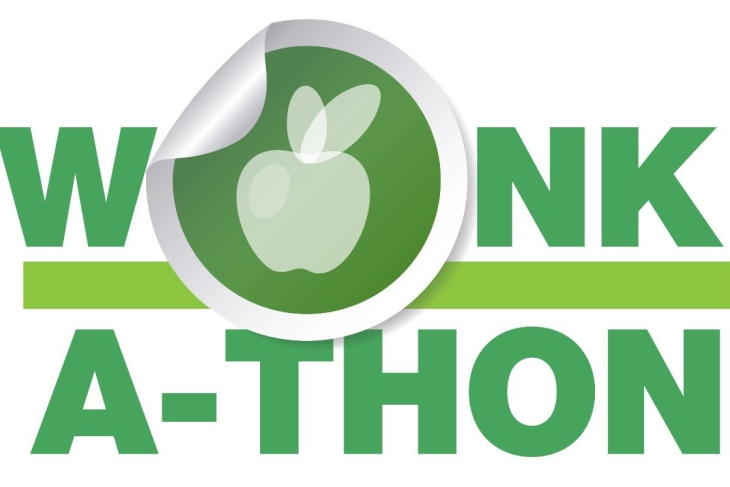This year’s Wonkathon is over, and the results are in!
2022’s Wisest Wonk:
- Keri Ingraham, for “Teacher certification and uniform salary schedules hinder CTE staffing.”
Second place:
- Kunjan Narechania and Jessica Baghian, for “To reinvent high school, look beyond education policy.”
Third place:
- Christi Martin, for “Pull back the curtain on the real-life outcomes of high school graduates.”
Thank you to all of our participants! Read about the competition, as well as all sixteen entries, below.
—
For decades—going back to The Shopping Mall High School (1985), if not before—reformers have dreamed of overhauling America’s high schools. And for good reason, given the evidence of widespread student disengagement, their lackluster outcomes in terms of post-secondary success, and their poor track record of preparing students to participate effectively in our democracy. In more recent years, enthusiasm has grown, in particular, for letting high school students engage with bona fide career and technical education (CTE)—not just as a sideshow to traditional college-prep courses, but with a serious focus on pursuing a different post-high-school path, including learning a skilled trade, perhaps also via youth apprenticeships, as well as laying the foundation for layered credentials to follow. Efforts such as the XQ Super Schools Project, CareerWise Colorado, the Pathways to Prosperity Project, and JFF’s The Big Blur have done important work helping Americans visualize what new and better high school experiences might entail.
And yes, there have been some changes on the margins. We’ve made solid progress getting more students—including more low-income, Black, and Hispanic students—into Advanced Placement, International Baccalaureate, and dual-enrollment courses. The number of high schoolers “concentrating” in a CTE field has also risen. Technology is now ubiquitous, with one-to-one computing common. Graduation rates are up, at least pre-pandemic.
Yet as Fordham president Michael J. Petrilli wrote earlier this year, almost all students are still funneled through the same “college prep” courses on their way to acquiring the Carnegie Units that states still require for graduation—regardless of their level of interest in college, preparation for it, or degree of engagement. Many teenagers are sleepwalking through high school, and our high schools are sleepwalking through the twenty-first century. There’s a lot of talk about reimagining high schools, but very little transformative action. For instance, there’s an abundance of state policy activity pertaining to CTE, but which types of policies have the potential to radically revamp high schools versus, say, offer programs for subsets of students?
For this year’s Wonkathon, we asked participants to explain how states can remove policy barriers that are keeping educators from reinventing high schools.
Topics that contributors might have wanted to consider addressing include:
- Significantly paring back high school course requirements: Is it time to rethink the Nation at Risk–era reforms that sought greater rigor in our schools by boosting the number of math, English, and other courses required for graduation? What about more recent efforts, such as Indiana’s “Core 40” or California’s “A to G,” to make the college-prep sequence the “default”? To make time in students’ schedules for real career training and other opportunities? Should we drop foreign language class requirements, arts or physical education mandates, or newer requirements for civics or financial literacy courses? How can we embrace “multiple pathways” without returning to the bad old days of tracking?
- Eliminating Carnegie Units altogether: An even bolder move would be to eliminate Carnegie Units entirely. But what could they be replaced with to ensure that a high school diploma holds value in the labor market? Is “mastery learning” finally ready for prime time? How to address equity concerns?
- Overhauling school funding systems for high schools: There are many exciting ideas about allowing teenagers to spend time learning outside the confines of their schools, including via apprenticeships in work places or in the community writ large. How could and should funding systems be changed to allow for this? Perhaps building on success in the dual-enrollment space?
- Updating teacher licensure rules: Do we need to rethink the qualifications we expect high school teaches to possess, especially in non-college-prep pathways?
- Reforming college entrance requirements: One reason that high schools keep doing the same old thing is because they want to ensure their students have a chance at enrolling at selective universities. What might colleges and universities (and their admissions offices, in particular) do to open the door to innovative high school approaches? Are there state policies around college admissions that need to change?
WHAT’S A WONKATHON?
For eight years now, we at the Thomas B. Fordham Institute have hosted an annual Wonkathon on our Flypaper blog to generate substantive conversation around key issues in education reform. Last year’s forum focused how to address students’ mental health challenges in the wake of the Covid-19 pandemic.
As in years past, we’ll encourage our audience to vote for the “wisest wonk,” an honor previously conferred on such luminaries as Angela Jerabek, Abby Javurek, Jessica Shopoff, Chase Eskelsen, Christy Wolfe, Seth Rau, Joe Siedlecki, McKenzie Snow, Claire Voorhees, Adam Peshek, and Patricia Levesque.
THIS YEAR’S SUBMISSIONS:
- Transform and integrate our siloed systems of K–12, postsecondary, and workforce development, by The Big Blur Team at Jobs for the Future
- Fund high schools to provide post-secondary support, and hold them accountable for the results, by Pagee Cheung and Arthur Samuels
- A wonderful thing—amazing high schools, by Paolo DeMaria
- Let kids who hate high school consume a lot less school, by Mike Goldstein
- Teacher certification and uniform salary schedules hinder CTE staffing, by Keri Ingraham
- Policy doesn’t block high school redesign. Lack of will does, by Ed Jones
- A missing piece for education in the United States: Moving from an industrial to an inquiry-based paradigm, by Robert Kelty
- Families are shrinking high schools with or without help from policymakers, by Matthew Ladner
- Reinventing high schools by eliminating Carnegie structure, by James Lewicki
- Pull back the curtain on the real-life outcomes of high school graduates, by Christi Martin
- To reinvent high school, look beyond education policy, by Kunjan Narechania and Jessica Baghian
- Reimagining high schools: Removing barriers to transform learning, by Charles Ogundimu
- Break high schools’ monopoly on awarding credit and diplomas, by Peter Robertson
- Back to the future for American high schools, Sheree Speakman and Kathy Smith
- Institutionalism, not policy, is the biggest barrier to reinventing high schools, by Chelsea Waite
- What is the best way to reform state high school policies? Ignore them, by Eric Wearne

